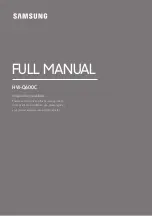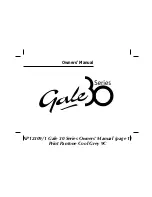
are provided for : Panavision Zoom (48 DP 20 degree PA), Panavision Iris (64 DP 20 degree PA
), Panavision Focus (32 DP, 14.5 degree PA.), .60m, .70m .
3.
A lightweight bracket for Panavision cameras is available (p/n 4341). It is secured to the
post adjacent to the lens mount, and allows up to two motors to be rigidly supported with
short swing arms. See illustration at the rear of this manual.
Correct operation of the unit and accurate positioning depends on the motor supports being
rigid. Excessive flexure can cause the motors to not recognize the end limits of the lens. The
motor will remain stalled for a few seconds until the system shuts down that channel.
Fig.8 NMH Battery Pack
Fig.9 Charger
VII. BATTERY PACKS AND CHARGER
Nickel Metal Hydride (NMH) battery packs (fig.8) are used to power the Microwave Transmitter
and Hand Unit. The packs provide 12V at 1.5 AH. They incorporate an internal temperature
sensor to protect the cells from either overcharging or from being charged below freezing
temperatures. They will operate the Transmitter/ Hand Unit combination for 6 – 7 hours
continuously. These cells do not exhibit any “memory” effect and therefore they do not need to
be completely depleted before being recharged.
The Fast Charger (fig.9) has been specifically designed to safely charge the NiMH battery packs
at high currents. The unit accepts universal mains voltage 110 - 240 VAC 50/60 Hz. It will fully
charge a depleted battery pack in approximately 60 – 80 minutes.
The LED marked CHARGE will glow red continuously when in its fast charge mode. After the
unit has completed the fast charge phase, the LED will blink, indicating it is operating in the
trickle mode. The battery can be left on the trickle mode indefinitely without damage.
The charger will not allow a fully depleted battery to begin the quick charge mode until the pack
reaches a minimum voltage in trickle mode and a minimum temperature of 10
q
C. When the
battery pack temperature is below 10
q
C, the CHARGE LED will
blink for a few minutes until the cell voltage rises to where the fast charge can begin safely.
13





































